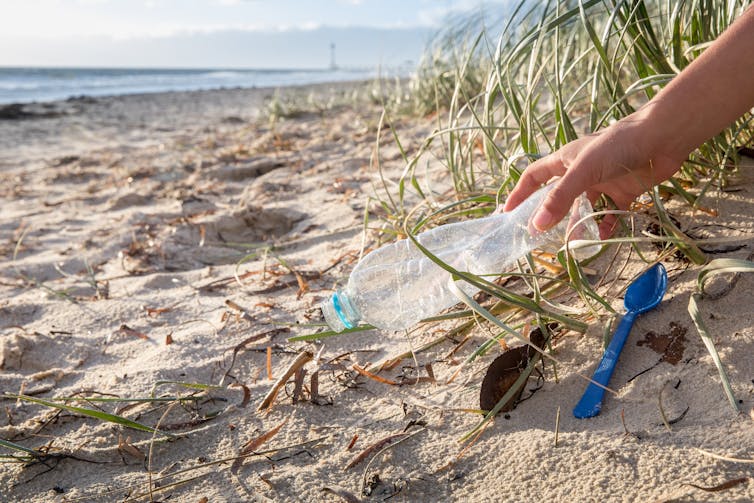Australia’s charity sector is growing – but many smaller charities are doing it tough

Revenue for Australia’s charity and not-for-profit sector has reached record highs, and total donations have grown. But the story isn’t the same everywhere, and some smaller charities may be struggling.
That’s according to the latest edition of the Australian Charities Report from the Australian Charities and Not-for-profits Commission (ACNC), released this week.
The report shows that in the 2023 reporting year, revenue for Australia’s charity sector rose by 10.7% to a record A$222 billion. This was bigger than the growth in expenses, which rose by 8.4% to $212 billion.
Total donations and bequests also rose, to $18.9 billion. But the picture is nuanced. One single donation made to the Minderoo Foundation of $4.9 billion is included in this figure.
If this is left out, total donations rose by less than 0.4% across the sector. This suggests we should perhaps put any celebrations on hold and instead ask why donations might be flat-lining.
In 2023, the top 30 charities accounted for 40% of all donations and bequests to the sector. This was double the 20% share reported for the previous year.
Australia’s charity sector plays a vital role in society. For it to thrive, all of its elements must be healthy, including smaller charities.
Some big wins
The large donation was made to the Minderoo Foundation (in Fortescue shares) by Andrew and Nicola Forrest, as part of their commitment to the Giving Pledge. This further concentrated the share of donations received by the largest charities.
The Minderoo Foundation funds a wide range of philanthropic programs and research. For example, it works with Citizens of the Sea to collect marine life DNA as part of the 2025 Pacific Rally to monitor marine biodiversity.
In 2023, the Minderoo Foundation funded the creation of Uncloud as a peer-to-peer hub to show the true impact of vaping, a program that has been handed over to VicHealth.
Elsewhere, Clean Up Australia once again had the most volunteers of any organisation. In 2023, it increased its numbers by 120,000 volunteers to more than 1 million. This represented 44% of the entire growth in volunteer numbers across the sector.
These are both great examples of how large national charities can grow year-on-year. But what about the smaller ones?
Why smaller charities struggle
About 60% of Australia’s charities operate with revenue less than $500,000. And about half of these are classified as “extra small” – with revenue less than $50,000. These are the charities that will be doing it tough.
The report shows extra small charities had the highest increase in total expenses, up 21%. It also shows that they continue to bring in less revenue than they spend. Extra small charities had a net loss of $144 million in 2023 compared with a loss of $85 million the year before, a 69% increase.
At the University of South Australia’s Ehrenberg-Bass Institute, we are aware that small brands suffer twice.
The first problem is they have fewer customers (or in this case, donors). The second is that, on average, those who support them will display slightly less loyalty than supporters of the bigger brands. In marketing, this is known as “double jeopardy” for brands.
It is a statistical effect we can’t change, but one that is worth knowing when evaluating results and setting strategies for the sector.
Larger charities have some key advantages that make garnering support easier.
One is simply that they are more well-known. Those who only give infrequently are more likely to come across (and give to) larger charities.
Smaller charities, on the other hand, are more likely to be sharing their supporters with multiple charities, both small and large.
As a consequence, loyalty of smaller brands looks slightly lower than that shown to bigger brands.
How can we fix this?
One way of raising the profile of smaller charities is to encourage mergers and support other ways to grow. The report shows a number of charities categorised as extra small in 2022 moved into the small charity category in 2023.
Helping individual charities get bigger can have positive knock-on effects for employment in the sector and job security.
The report notes 45% of the staff of small charities were casual, compared with 23% of extra large charity staff. Extra large charities also reported adding the most employees, an increase of 60,480.
Working together
Another solution is the federated charities model, where charities with similar goals work together to provide a coherent brand identity that reduces wastage in marketing expenses. If they share resources, they can ensure everyone is consistent in how the brand is portrayed and they can optimise marketing expenditure.
Under this model, individual charities can tailor their messaging or choice of media outlet to suit their local context, while building a valuable brand all can use, making it as easy as possible for people to volunteer and donate money.
There are still some services in society that rely on very small charities that can’t easily grow or federate with others. While support is available to access other revenue streams, such as grant funding, this assumes the charity has people who can write grants, manage its expenditure and report back to the funding body.
That puts this potential revenue source out of reach for many. The operations of many of these smaller charities do not look sustainable in the current environment, and we need to come up with new solutions to show our support.
Authors: The Conversation














